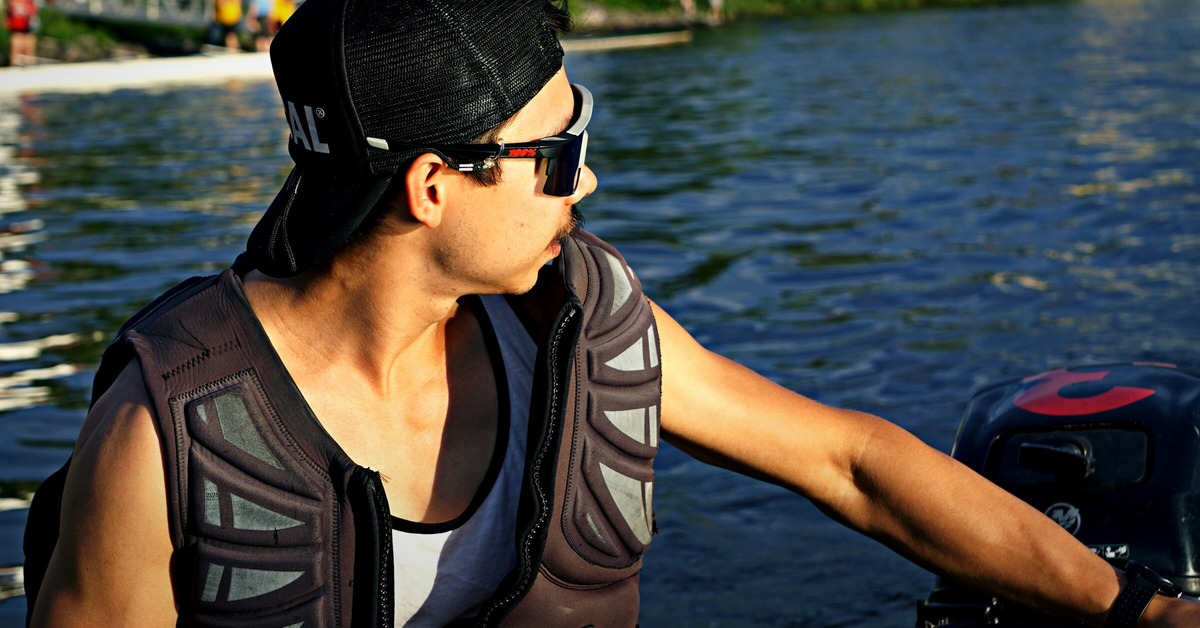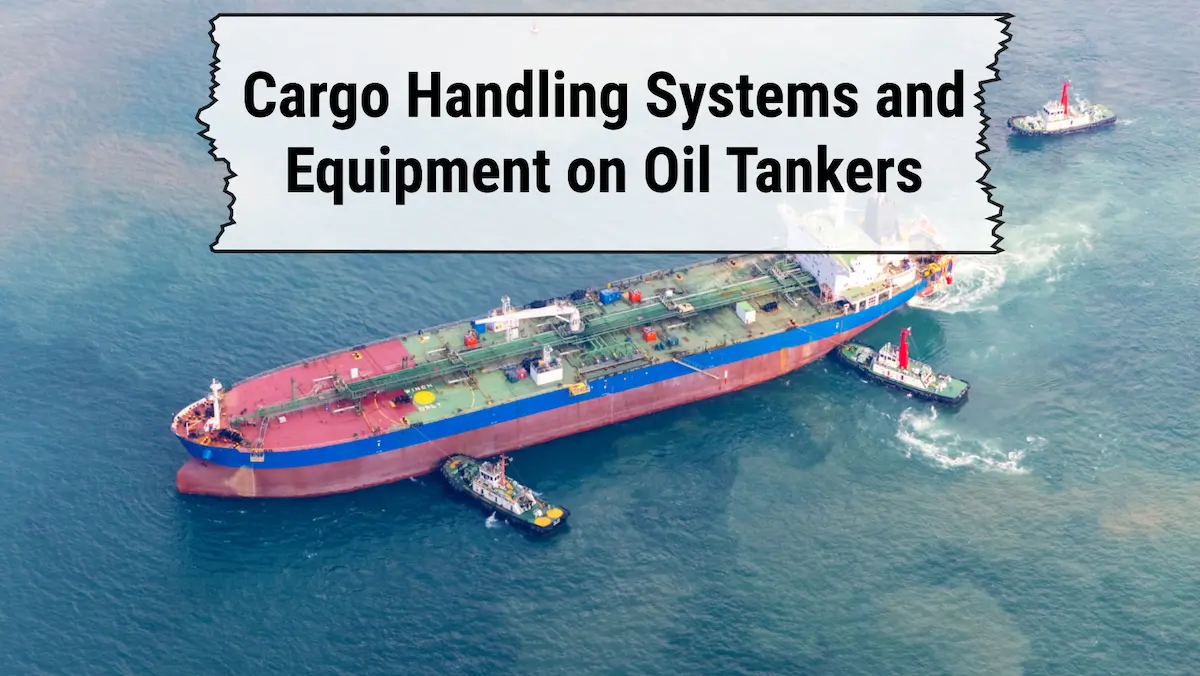“The adrenaline rush that you get on the road is twice as that you get on the water” saying let us get into the world of powerboat racing.
Powerboat racing is an exciting sport taking place on open waters. There are many varieties of powerboat racing, each of which has different rules. The different kinds of powerboat racing are inshore, offshore, and jet ski racing.
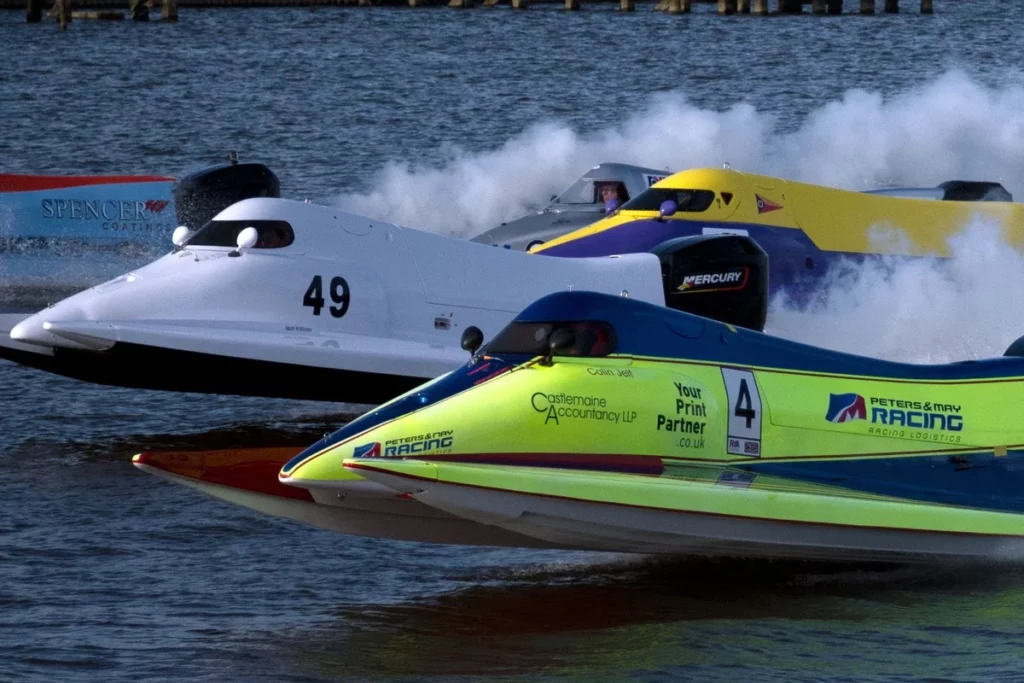
Inshore racing takes place on closed waters or protected boundaries such as on lakes and rivers. Unlike inshore, offshore racing takes place in open waters like oceans. Jet ski racing takes place independently as it is more of personal watercraft racing. It is very popular in today’s times.
This article will focus on the different types of powerboat racing, the types of boats used, the waters raced on, and the issues to overcome by competitors in each type.
History Of Offshore Powerboat Racing
Offshore powerboat racing can be traced back to the early 20th century. It was conventionally used by the elites for recreational racing purposes. The first officially announced powerboat racing was held in the 1930s in the United States and the first official world championship took place in the early 1960s.
Boat racing was often a curtain raiser event held at various boat shows and waterfront festivals to gain the attraction of the crowd. And the boat often used were modified versions of production models.
Offshore powerboat racing has now evolved to much more sophisticated levels with the boats being more powerful and faster due to technological advancements and plentiful resources. It is a highly competitive sport in today’s times and teams from all over the world compete amongst one another on beautiful waterways the world.
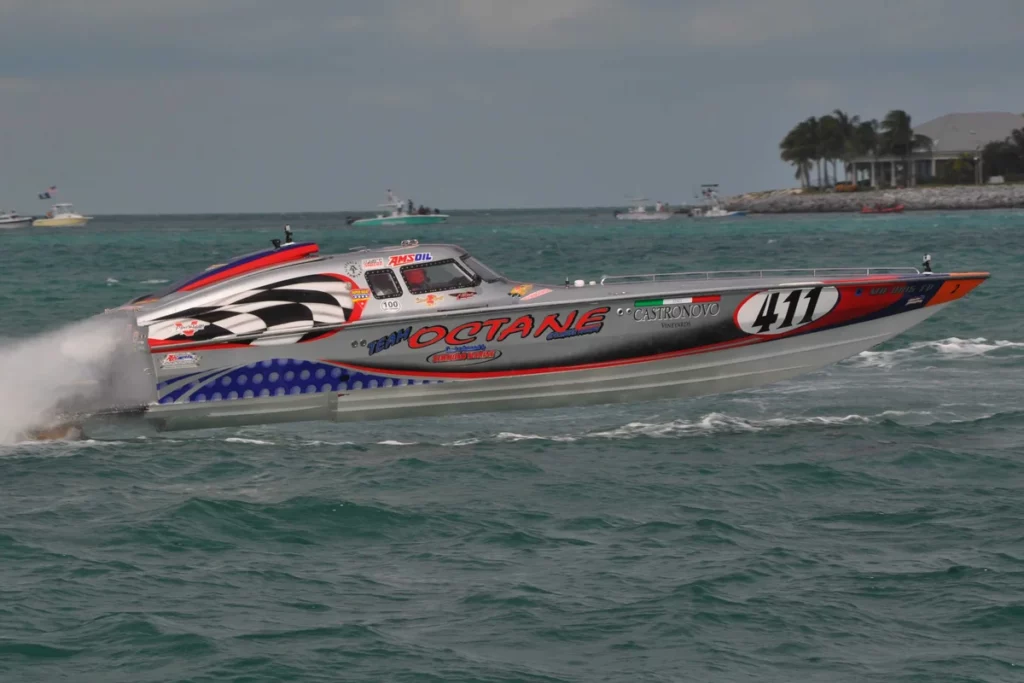
Offshore Powerboat Racing
Offshore powerboat racing involves highspeed motorboat racing in open waters, mostly specific to oceans. These offshore racing powerboats are specially manufactured for racing and can be branded as large, high-powered boats.
These powerboats are powered by engines that can yield up to 3000 horsepower. The length of these boats is usually between 30-50ft.
These boats are able enough to be agile in movement and easily maneuverable. Yet they can withstand the rough conditions of open waters. They are able enough to reach speeds up to and over 100 miles per hour as they are high-performance and high-powered vessels.
The races held last anywhere between a few minutes to several hours. Offshore powerboat racing is a very popular sport in the world and several events take place all across the globe throughout the year, especially in Asia, Europe, and the United States of America.
Inshore Powerboat Racing
Inshore powerboat racing takes place on protected waters such as lakes and rivers, unlike offshore racing. The boats used for inshore racing, are smaller and less powerful compared to offshore racing. The engines supply only up to 100-300 horsepower.
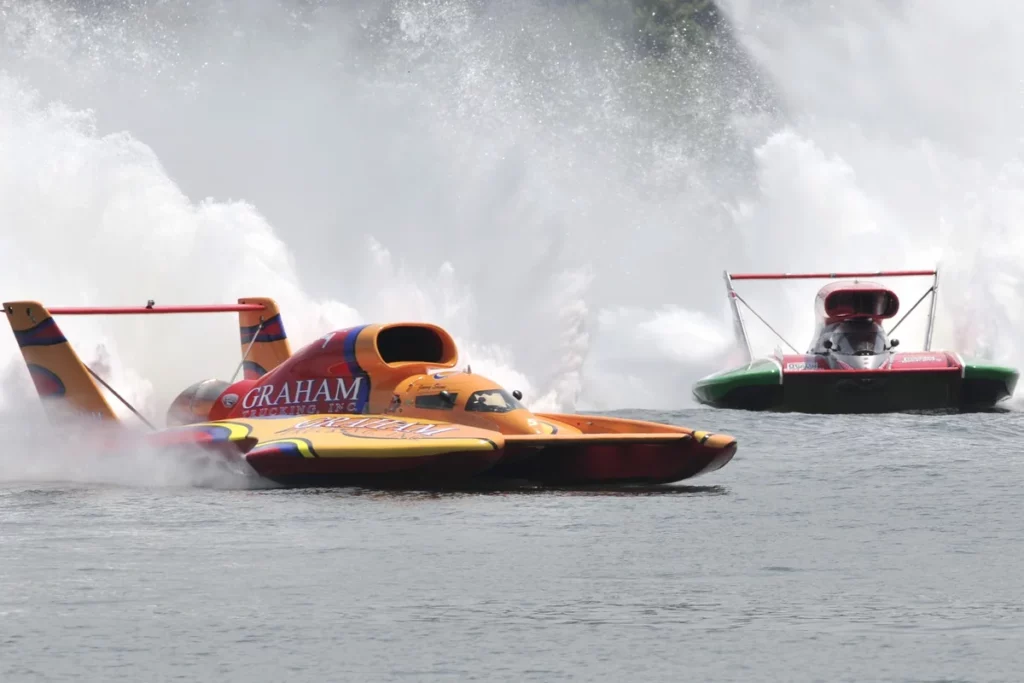
Inshore races are generally shorter than offshore races. Inshore races are usually marked with buoys. The winner is usually determined by calculating the total points availed during the entirety of the race.
The kinds of boats used for inshore powerboat racing usually include monohulls, V-bottoms, and catamarans. The most widely used type is a monohull and depending on the conditions of the racing zones, V-bottoms, and catamarans are chosen specifically.
Inshore powerboat racing is administered and authorized by national and international organizations such as the Union Internationale Motonatique (UIM). They control by laying down rules and regulations that oversee the sport.
Not anyone who owns a powerboat can compete in an inshore race. Competitors must satisfy specific levels of skills and experience as well as have appropriate safety equipment. Some even need to ensure optimal physical fitness levels and qualify for a medical examination before competing.
Jet Ski Racing
Jet Ski racing unlike inshore and offshore powerboat racing personal watercraft racing (PWC). It can be held in both freshwater and saltwater bodies. The PWCs (personal watercraft) hold high speed and are small motorized watercraft that are ridden standing up. It is a very thrilling and exciting form of powerboat racing.
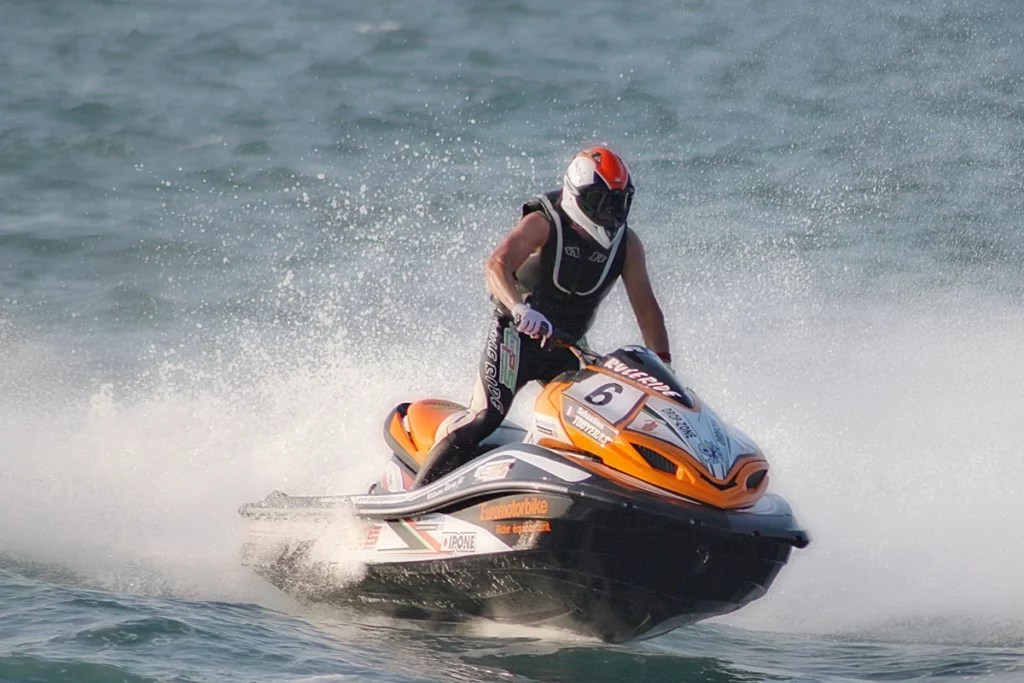
These jet skis are specifically designed and manufactured for speed and maneuverability. The engines provide anywhere between 150-300 horsepower and can go as fast as 70 miles per hour. The jet skis are also equipped with safety features such as kill switches and lanyards, which are made to automatically switch off the engine in instances of the rider falling off.
There are several courses at which jet ski racing takes place such as slalom courses, closed-course circuits, and endurance races. Among these, the closed-circuit course is the most famous type of jet ski racing and this comprises multiple laps around a course marked with buoys.
Similar to a closed-circuit course is a slalom course with just an addition of slalom gates that the riders must navigate through. A race for endurance includes multiple laps and the duration of these endurance races last longer, up to several hours even.
Jet ski racing is usually administered by the International Jet Sports Boating Association (IJSBA) which lays down the rules and regulations that govern the sport. Competitors for jet ski racing must hold a specific level of skill and experience as well as have appropriate safety equipment. Some even need to ensure optimal physical fitness levels and qualify for a medical examination before competing.
Types Of Boats Used In Offshore Powerboat Racing
The types of powerboats used in racing are specific and take place on open waters. The boats are generally large and powerful with engines that can produce up to 2500 horsepower. Each boat has its specialty and characteristics.
The first one is a monohull. Monohulls have a single hull and it can be anywhere between 30-50ft in length. They specialize in speed and maneuverability and are made of lightweight materials like carbon fiber. Monohulls are the most commonly used boats for offshore racing and are seen as the sport’s standard.
Catamarans are yet another type of boat used in offshore powerboat racing. They have two parallel hulls and are generally between 30-50ft in length. They specialize in stability and speed and can be faster than monohulls in specific conditions. It is considered comfortable for both the crew and passengers.
V-Bottoms are also widely used in offshore powerboat racing. They are characterized to have a deep V-shaped hull and are also generally between 30-50ft in length. They also specialize in speed and maneuverability and is made of lightweight carbon fiber and can be faster than monohulls under certain conditions
Summary
In short, offshore and inshore powerboat racing as well as jet ski racing are all different forms of motorsports that use high-speed boats and personal watercraft. They are governed by several authoritarian bodies and it follows a set of rules and regulations.
Offshore racing takes place on open waters, while inshore racing takes place on protected waters such as lakes and rivers. Jet ski racing involves racing in closed courses with tight turns and shorter races.
Offshore racing typically makes use of four types of boats such as monohulls, V-bottoms, catamarans, and trimarans. Whereas, inshore and jet ski powerboat races use monohulls, v-bottoms, and catamarans. Each type of boat has its characteristics and specialties but they are all commonly 30-50ft in length.
Boats used in offshore racing are generally the largest and the most powerful, as well as their engines, are designed to be able to produce up to 3000 horsepower whereas inshore and jet ski boat engines produce only 100-300 horsepower.
- LNG vs. LPG: A Comprehensive Guide to the Difference between LNG and LPG – November 5, 2024
- Cargo Handling Systems and Equipment on Oil Tankers – November 5, 2024
- What is Ship Tonnage? All Types and Use Explained! – October 30, 2024




